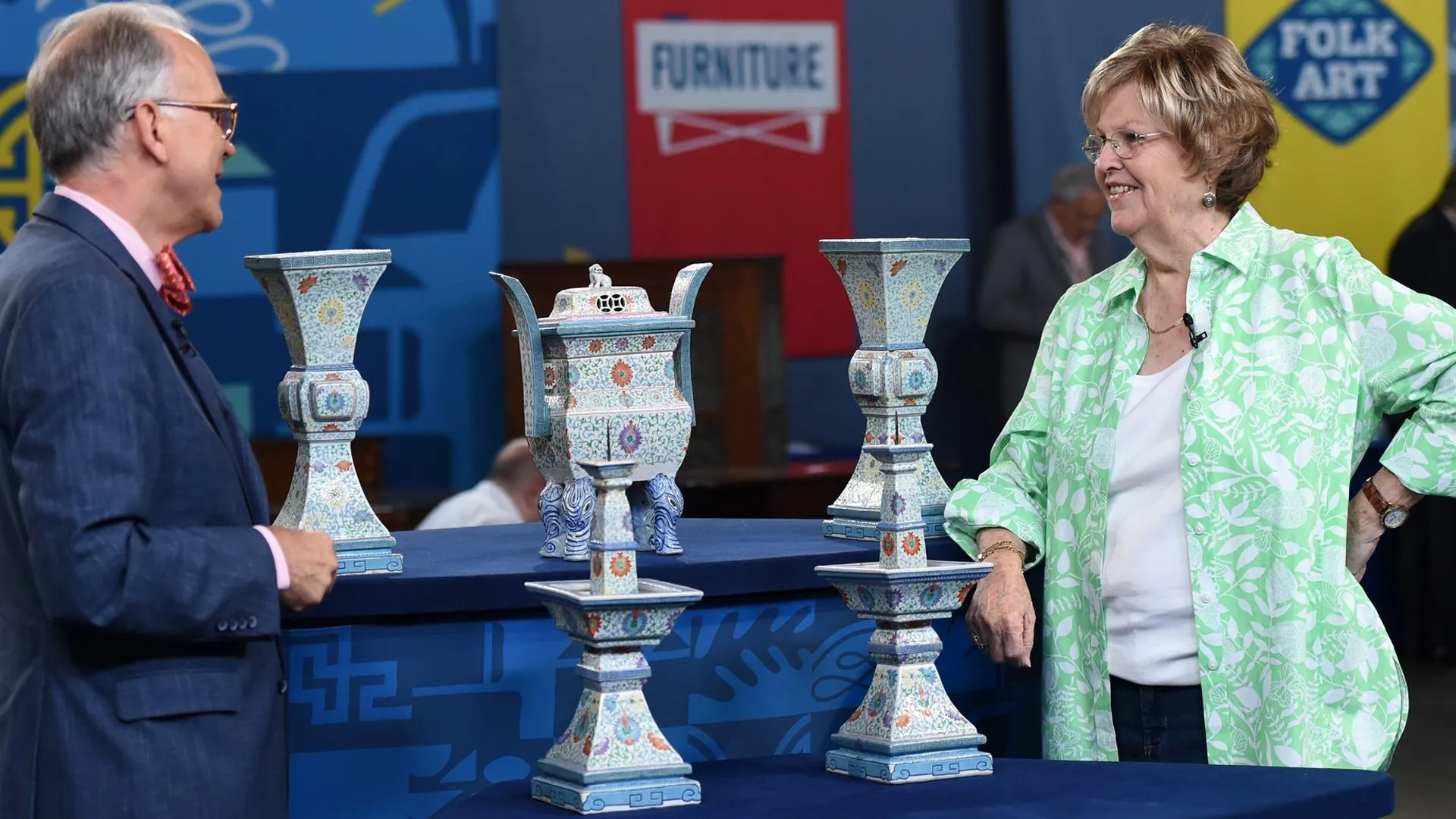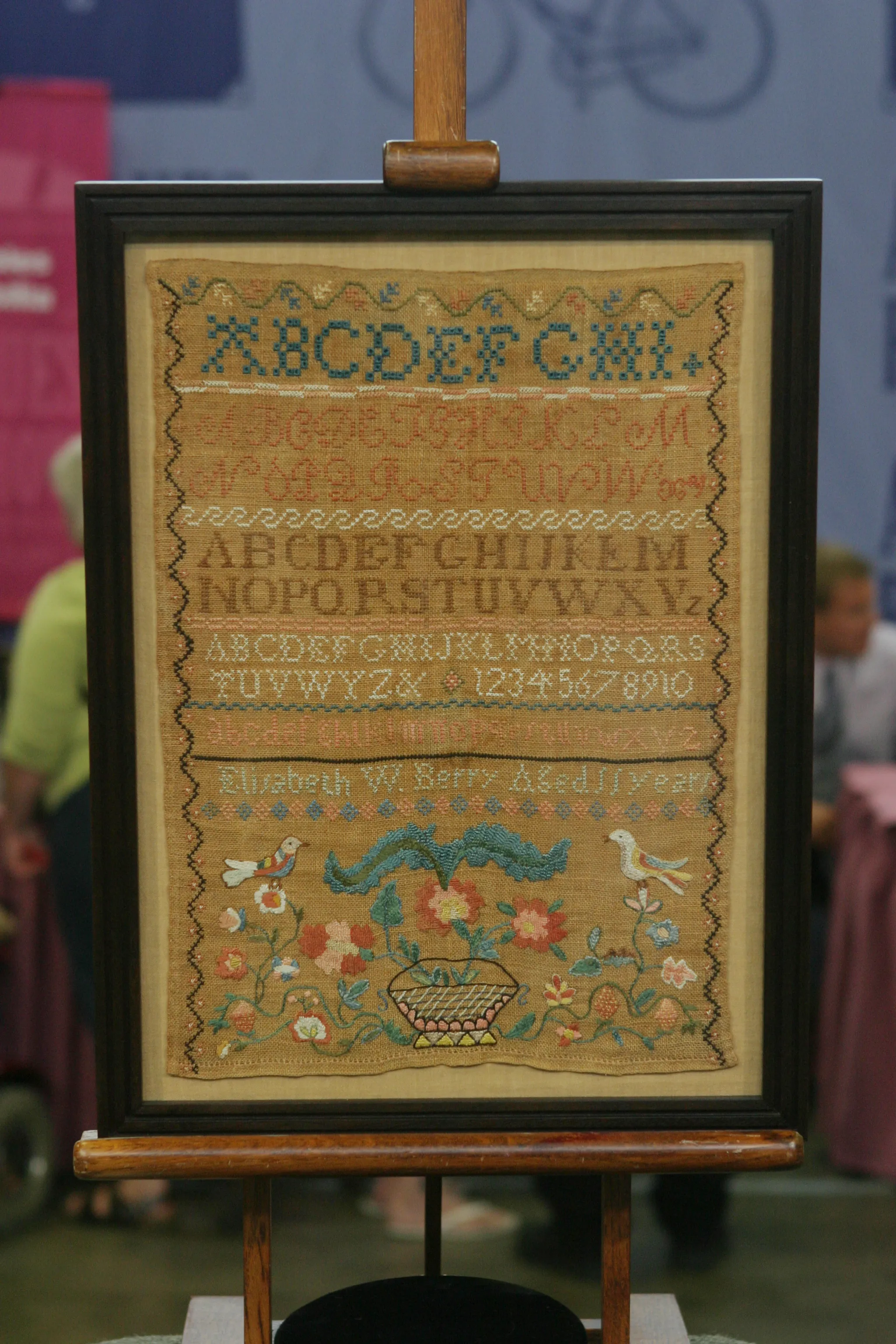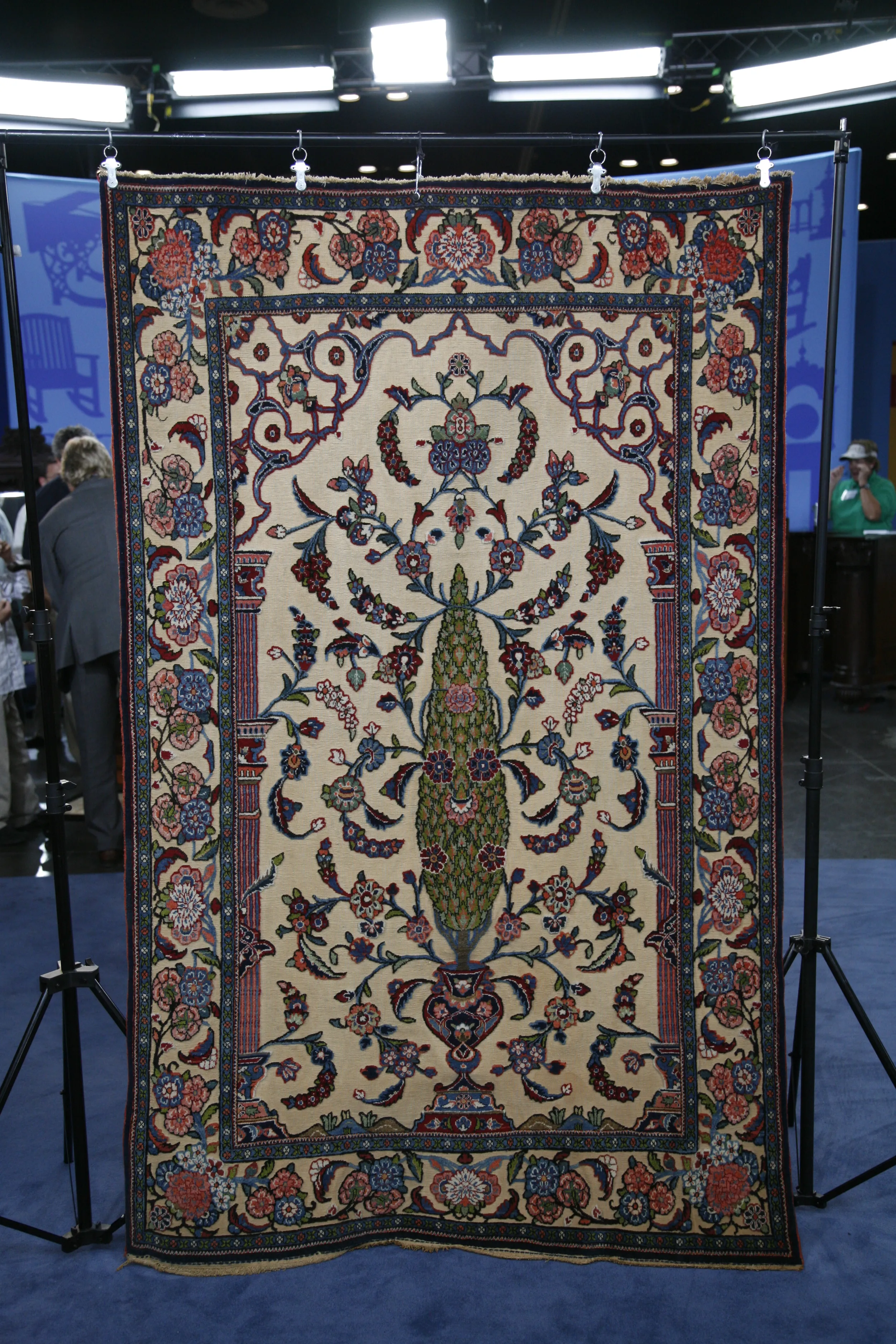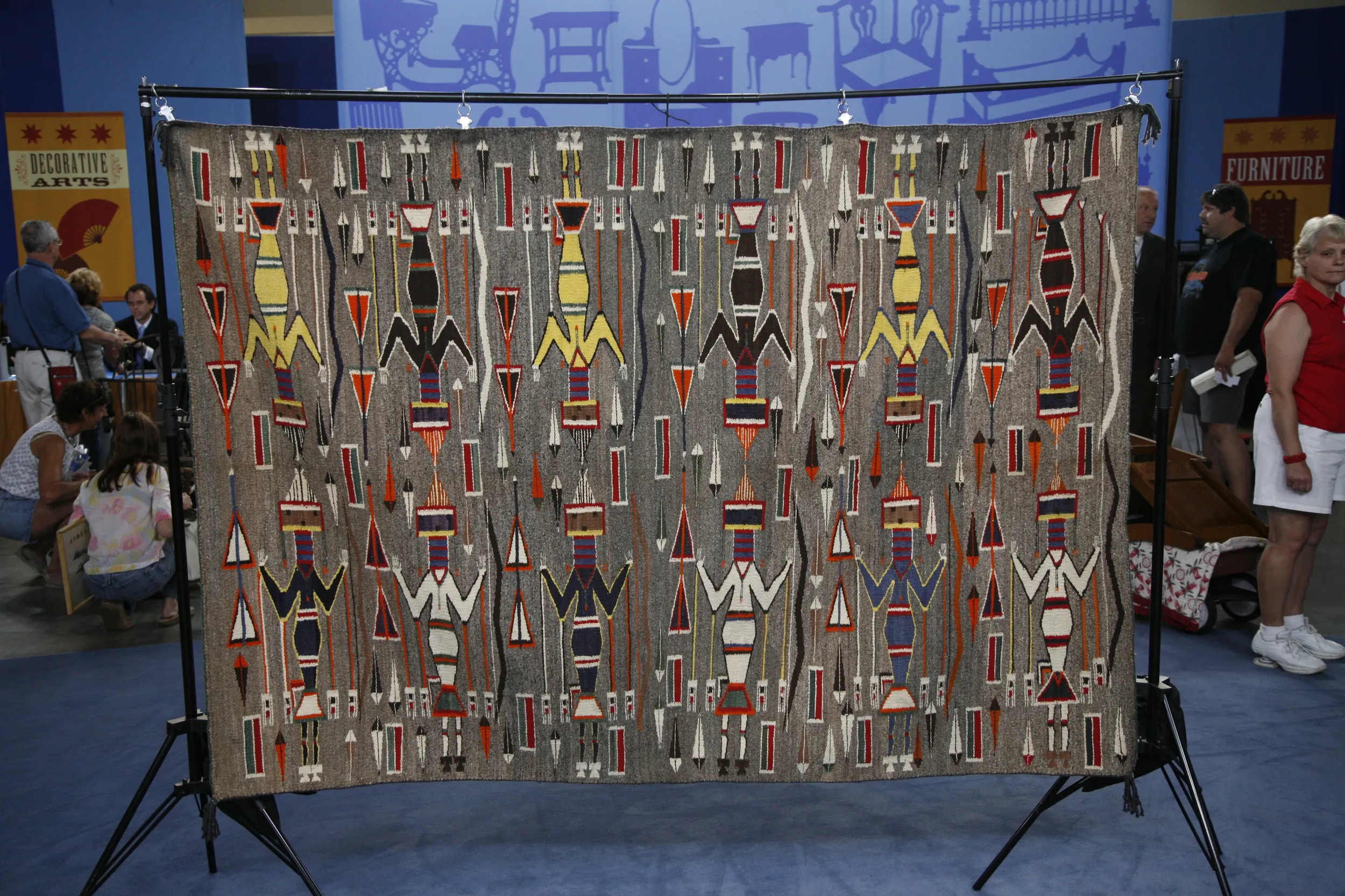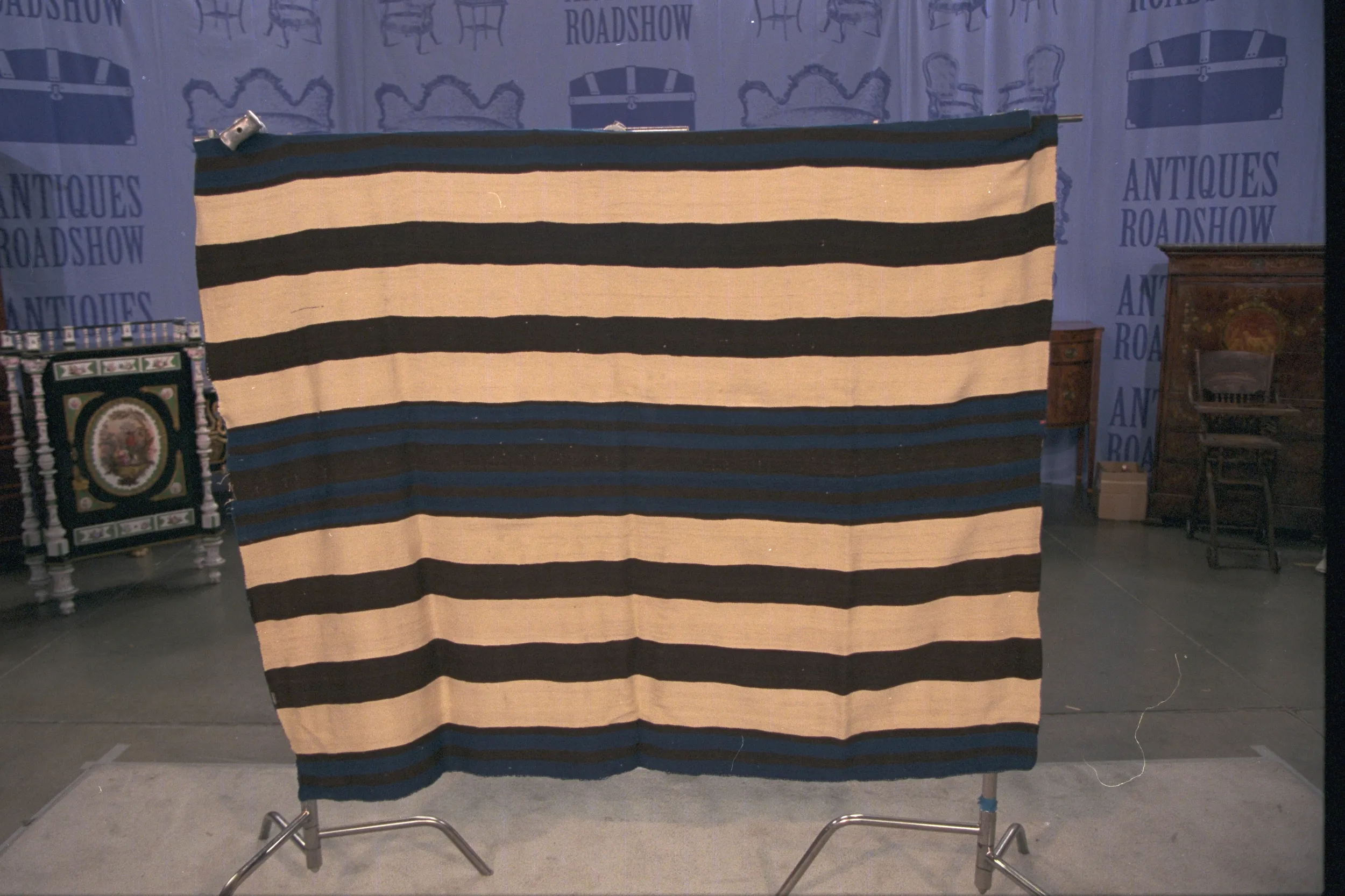GUEST: Well, this was a rug that was gifted to my grandfather, I believe back in the 1930s. He was a physician, and it went to my father. They had it as a wall hanging. I believe it to be a Turkish prayer rug, but that's really about all I know.
APPRAISER: This is a Mudjur prayer rug, which is a prayer rug that comes from central Turkey, from a village near Kirsehir. And it was made in the first half of the 19th century, so 1830, 1840, in that range. There's a wonderful tradition of Turkish village rugs being made from the 15th through the 17th century. Many of them were exported to Eastern Europe, and are now hanging in churches in Eastern Europe. And it's one of our best references. And many were also shown on tables in old master paintings from the 16th and 17th century. So that's one of the ways that we get some of our reference points. This wonderful stepped field has the kind of angularity and graphics that you would find in a very early piece. The spacious corners that are done in this amazing shade of magenta is actually an insect dye. It's called cochineal. This is your madder red, which is a classic plant dye. And all the other shades we see are coming from plants. But that one shade is coming from insects.
GUEST: Wow.
APPRAISER: The rug is in surprisingly good condition for its age. Believe it or not, this rug has very little wear. Even though you see areas like this...
GUEST: Yes.
APPRAISER: ...where the knots are completely gone, and it's just down to the foundation, you'll notice that on either side the colors are completely intact. This is because the material that they used to get the brown was iron, and it was a corrosive dye, and it would eat away at the wool. This is actually a hallmark that collectors will look for that will help to validate the age of a rug. Some other things that collectors really like to see in a rug, and have it be in untouched nature, are its originality and lack of repair. So we'll see that the edges, which are called the selvages, are all original. And at the top and at the bottom you have what's called the flat woven ends, which are also intact.
GUEST: Is it wool, or is it...
APPRAISER: It's wool.
GUEST: It's wool, I see.
APPRAISER: It's very high quality wool, and it's also woven on a woolen foundation, so the warp and the weft are also wool.
GUEST: Okay.
APPRAISER: I would expect a collector to happily pay in the neighborhood of $20,000 for this rug.
GUEST: Oh, wow. Would that be insurance value also, then?
APPRAISER: Yes.
GUEST: I see.
APPRAISER: Yes, that's a current retail or replacement value.


